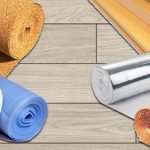Content
- 1 Types of bricks
- 2 What to look for when choosing?
- 3 Features of the brick for the fence
Brick fence - a design that will reliably protect the house area from outside penetration and will become a real decoration of the exterior of the house. Before starting the process of erecting a fence, it is necessary to choose a brick that is best suited for these purposes.

Types of bricks
The main types of bricks suitable for the construction of the fence are:
- Clinker;
- Silicate;
- Ceramic.

Each type of material has its advantages and disadvantages.
What to look for when choosing?
Before choosing a brick, you need to determine the exact design of the future fence and draw up its detailed design. It can be a monolithic fence or consist of brick pillars and sections made of other materials. Often, profiled steel sheet or other decorative elements are used for sections.
For the construction of a solid brick fence, you must first prepare a massive foundation that can withstand heavy loads. Filling should be carried out in sunny warm weather.

Features of the brick for the fence
The first type - clinker brick, is considered one of the most durable. It is characterized by a low percentage of water absorption and a high rate of resistance to frost. Clinker brick has a large run in size and color, and therefore it can be selected for the construction of any fence. The only drawback is the high cost of the material.

The second type is silicate brick, also characterized by a wide variety of colors and sizes. It is characterized by strength, but has a high percentage of water absorption. For this reason, it is not recommended for use in the construction process in regions with high air humidity.

The big advantage of this type of brick is that its front faces are located on all sides. Therefore, the finished fence does not need additional plastering or restoration.
Ceramic bricks, unlike silicate bricks, have a lower level of water absorption. This type of material has a front face only on three sides, and therefore it is recommended to plaster the inner side of the fence in the future.

Knowing small tricks you can save a budget and build a reliable and beautiful fence that will last for many years and not lose its original qualities.
-
 Latches and chains for doors: what you need to know about them?
Latches and chains for doors: what you need to know about them?
-
 Liquid wallpaper: advantages, application technology
Liquid wallpaper: advantages, application technology
-
 What material is better to replace drywall
What material is better to replace drywall
-
 Scope of dry construction mixes
Scope of dry construction mixes
-
 Why acrylic plaster is better than other coatings
Why acrylic plaster is better than other coatings
-
 What crushed stone can be hazardous to health?
What crushed stone can be hazardous to health?
-
 What is the optimal thickness of the substrate for the laminate
What is the optimal thickness of the substrate for the laminate
-
 What to choose - pressed fittings or crimp fittings
What to choose - pressed fittings or crimp fittings
-
 Why is mineral wool dangerous to health?
Why is mineral wool dangerous to health?
-
 Materials for external wall decoration: varieties and characteristics
Materials for external wall decoration: varieties and characteristics
-
 Why plaster can not be replaced with putty
Why plaster can not be replaced with putty
-
 What facade for the house will be the warmest
What facade for the house will be the warmest
New publications are published daily on our channel in Yandex. Zen
Go to Yandex. Zen


